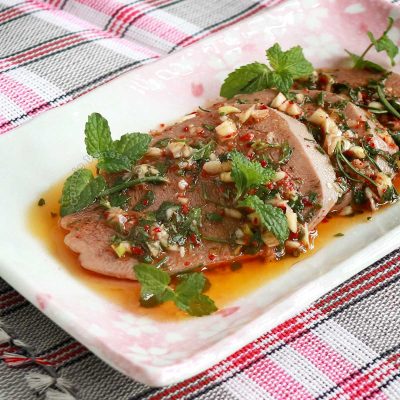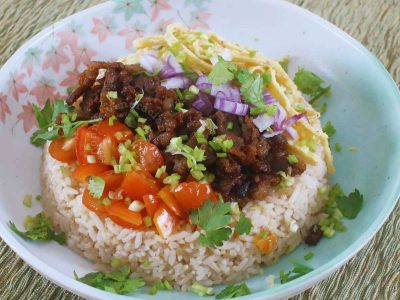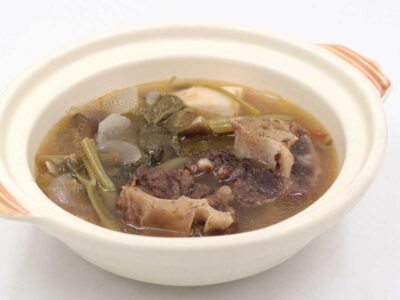So, is this an Asian dish or a South American dish? It’s a fusion of the two. There are recipes for the two dishes which I combined to make it. You may want to check them out now (if you’re curious just how this dish is a fusion of those two) or you may prefer to see them later. Either way, the links are below.
On a scale of one to 10, just how good is it? I find it tacky to toot one’s horn, so I’ll just say the three red meat eaters in the house normally consume only half a kilogram of meat in a single meal, but in this case, we finished a one-kilogram beef tongue for dinner.
On a scale of one to 10, how difficult is it to make this dish? Five, really. Just boil the beef tongue until tender, cool, peel and slice. The sauce requires no cooking — just stir to combine. Let me show you.
First, you need to cook the tongue. We like it very tender — so tender that when you pick up one slice with a fork, the probability is high that the slice will break into two or more pieces when lifted. There are cuisines where beef tongue is served chewy (grilled tongue in Japan, for example) but that’s not how we like this organ meat. We prefer it to be melt-in-the-mouth tender. So, the recipe begins with how to clean and cook beef tongue. For more about this lovely organ meat, see the post below.
Is it ox or beef tongue: buying tips, how to prep and cook
When cooked properly, beef tongue is very tender. A good cook can bring the level of tenderness to “melt in the mouth”. How is that done? Here are tips for buying, prepping and cooking beef tongue.
When the tongue is tender, scoop it out and cool on a rack. Then, peel off the skin (the illustration is in the linked post above) and slice the tongue. To get really clean slices, it is a good idea to cool the tongue, peel off the skin then wrap the tongue in cling film and allow it to chill in the fridge overnight. The meat firms up and makes slicing easier.
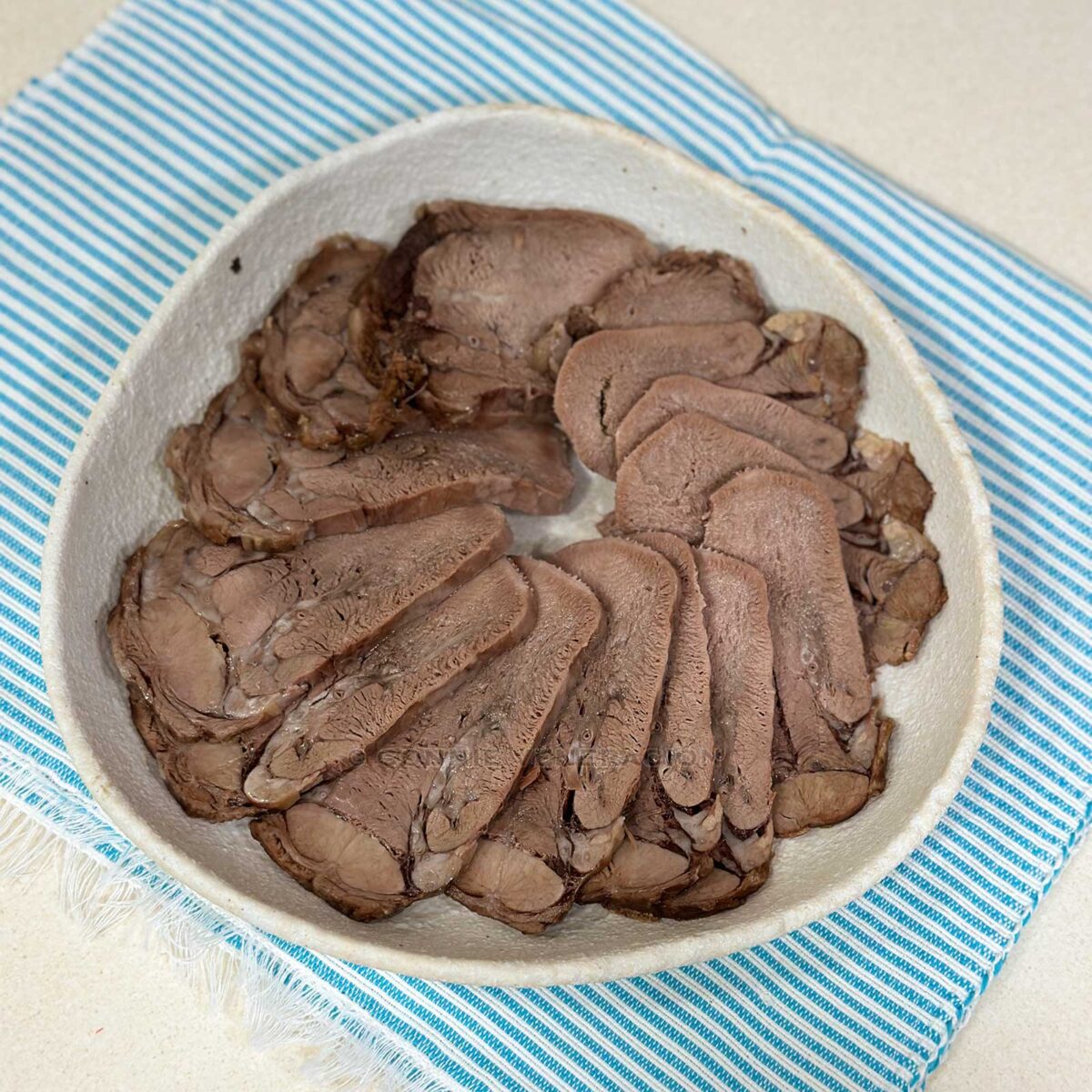
The next day, just take the tongue out of the fridge, slice and arrange the slices on a serving plate. You may serve this dish chilled so there really is no need to make a fuss about how to reheat the tongue. But if you must, just stick in the microwave and heat for about two to three minutes.

The sauce (you may call it a dressing if you wish to serve this dish as a starter course) is salty, sweet and spicy. The saltiness comes from fish sauce, the sweetness from palm sugar and the spiciness from raw onion, garlic and bird’s eye chili. Lemongrass gives the sauce a lovely citrusy aroma and flavor while the scallions add a subtler layer of onion-y taste.
Beef tongue with lemongrass chili sauce
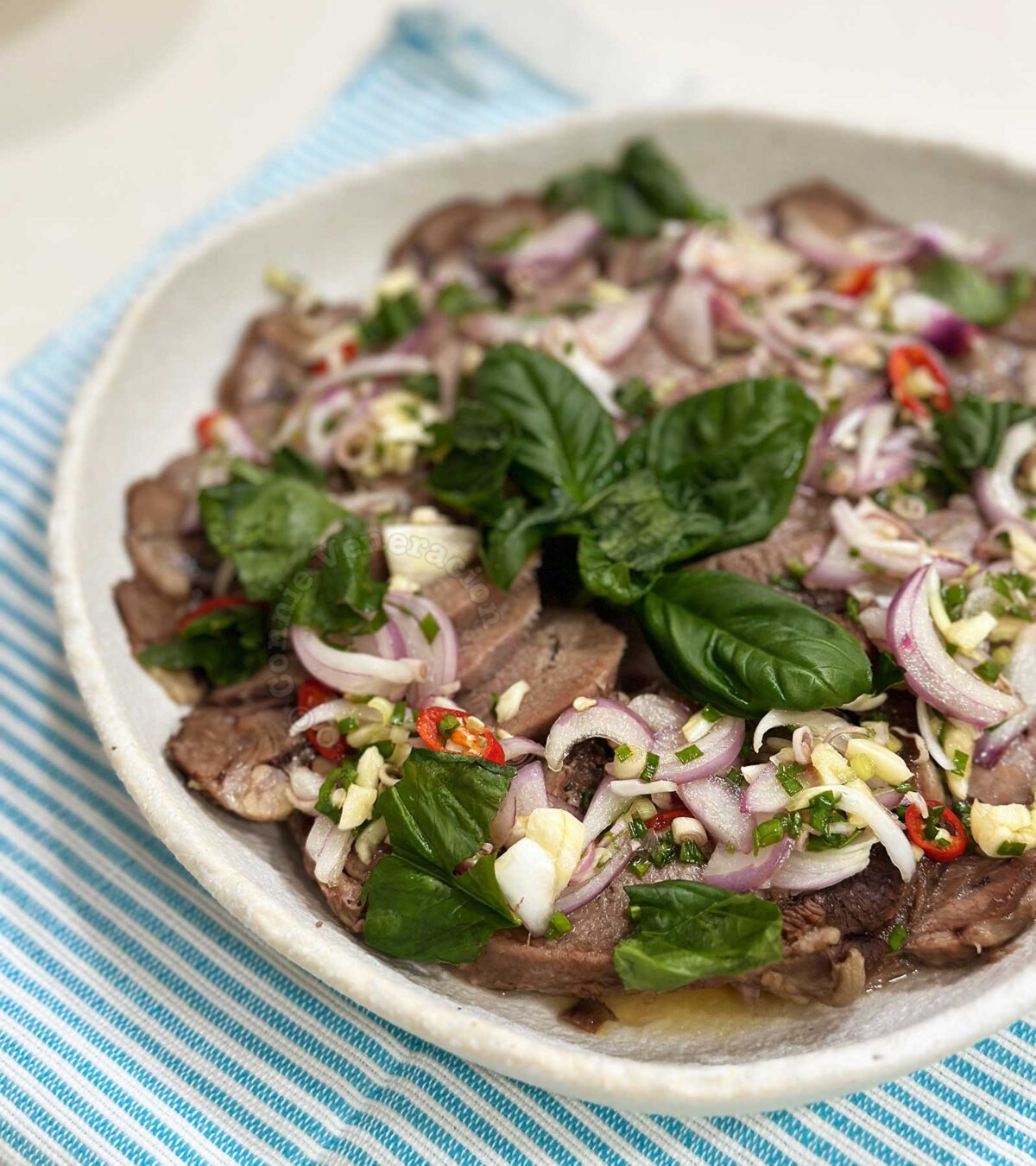
Ingredients
Beef tongue
- 1 beef tongue about one kilogram in weight
- rock salt
- 3 slices ginger
- 1 bunch scallions bottom part of the stalks only
- 3 cloves garlic
Lemongrass chili sauce
- 3 tablespoons fish sauce
- 6 tablespoons calamansi juice (or lemon or lime juice)
- 4 tablespoons palm sugar (honey works too)
- 2 tablespoons sliced lemongrass
- 2 shallots (or one small red onion) peeled and thinly sliced
- 3 cloves garlic peeled and chopped
- 1 bird's chili thinly sliced
- 2 tablespoons sliced scallions dark green portion only
Instructions
- Scrub the beef tongue with rock salt repeatedly to remove the sliminess. Rinse well.
- Place the tongue in a pot, cover with water, add the ginger, scallions, garlic and two tablespoons of rock salt.
- Bring to the boil, skim off any scum that rises, lower the heat, cover and simmer until tender (see notes).
- Scoop out the tongue and rest on a rack until cool.
- Peel off the skin and discard.
- Wrap the tongue with cling film and keep in the fridge overnight.
- Unwrap the tongue and, while cold, cut into thin slices.
- Arrange the slices in an overlapping fashion on a serving plate. If you don't want to serve the meat chilled, stick the plate in the microwave and heat on high for two to three minutes.
- To make the sauce, whisk the fish sauce, calamansi juice and palm sugar until the sugar is fully dissolved.
- Stir in the lemongrass, shallot, garlic, chili and scallions.
- Spoon the sauce and vegetables over the beef tongue.


